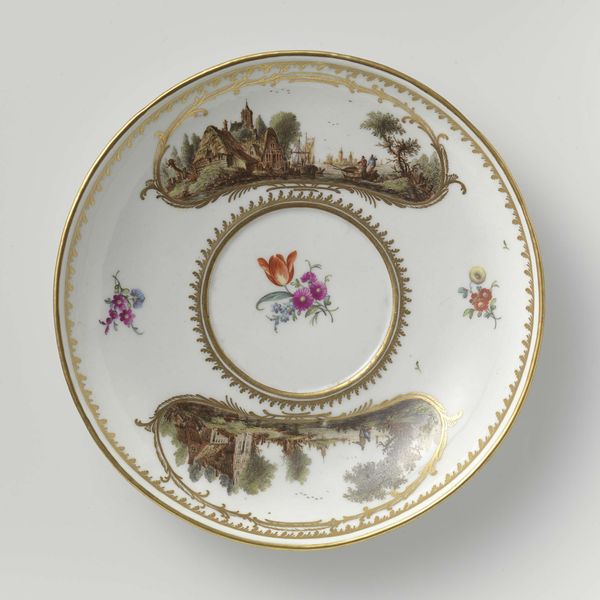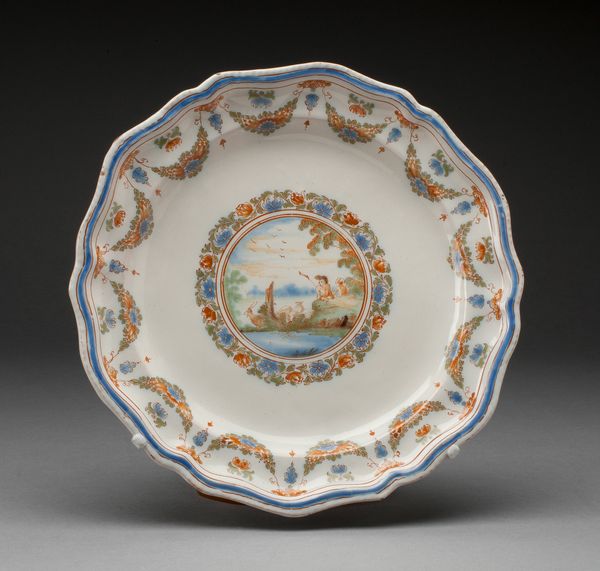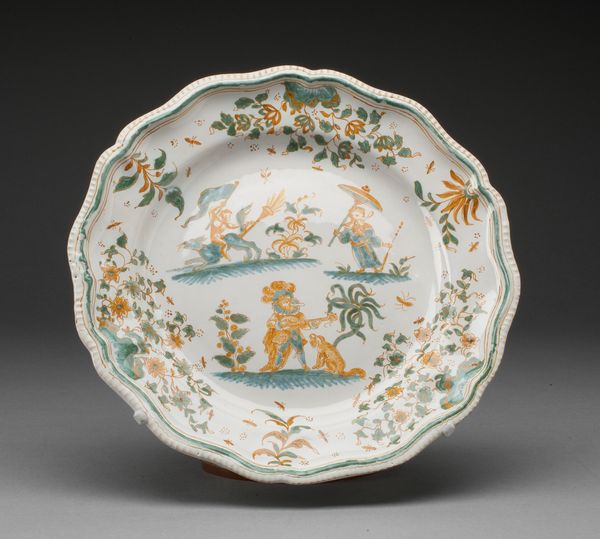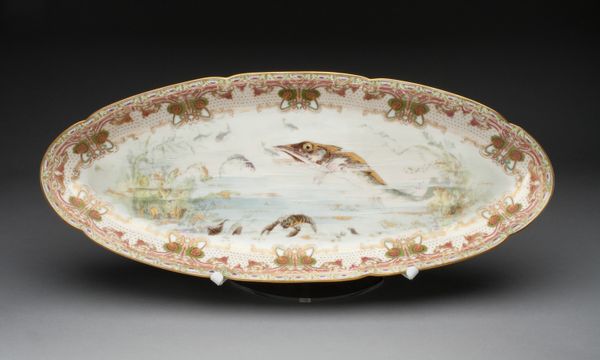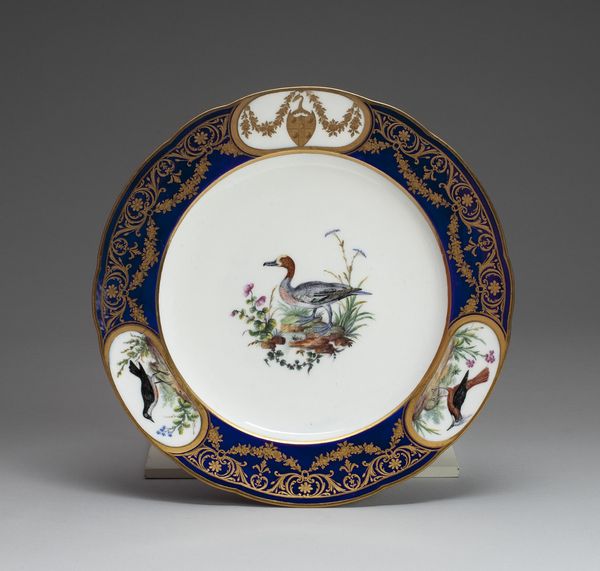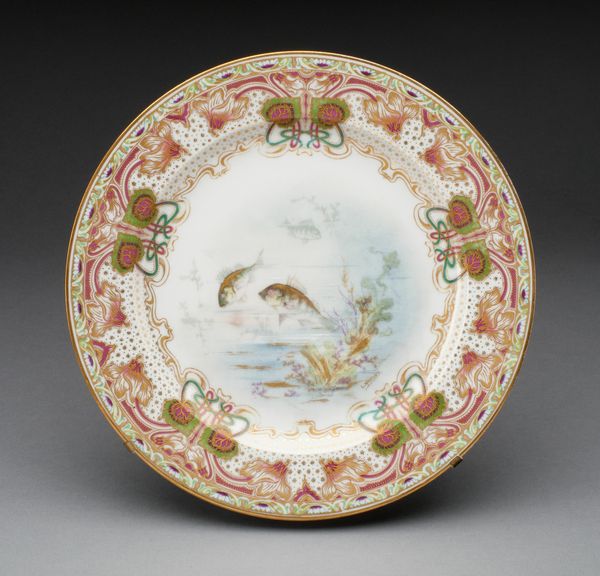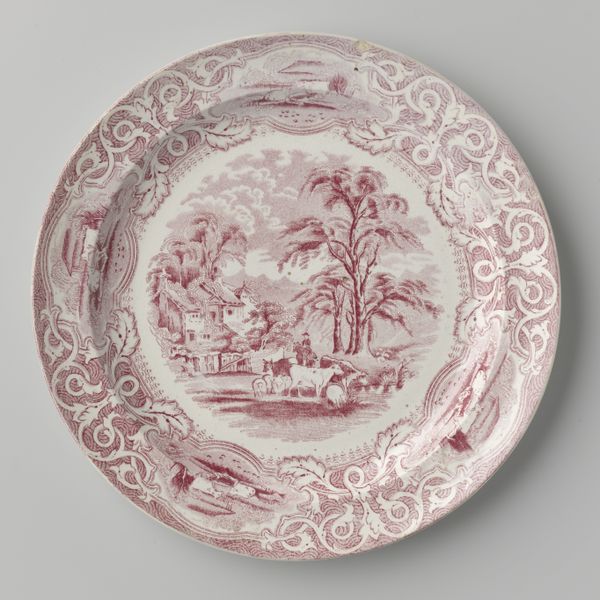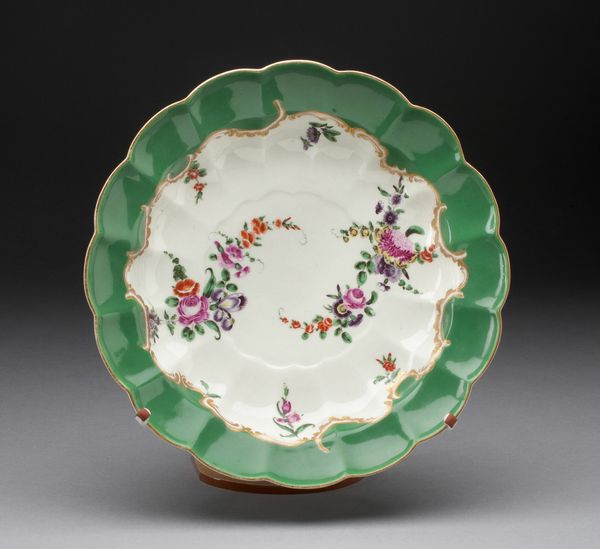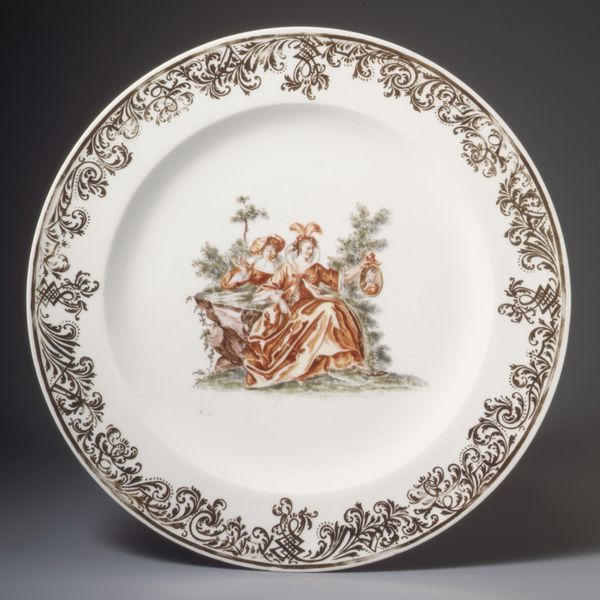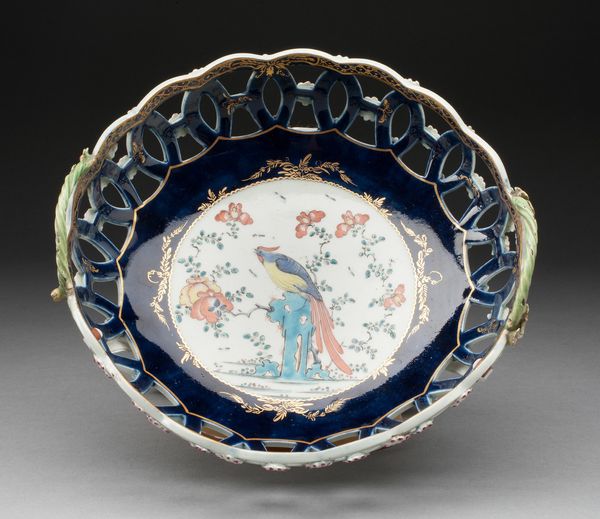
Spoelkom, beschilderd met een landschap met vee c. 1809 - 1814
0:00
0:00
koninklijkeporseleinfabriekdommerco
Rijksmuseum
painting, ceramic
#
painting
#
landscape
#
ceramic
#
ceramic
#
genre-painting
Dimensions: height 9.9 cm, diameter 22 cm
Copyright: Rijks Museum: Open Domain
Curator: Here at the Rijksmuseum, we have a fascinating example of early 19th-century Dutch porcelain: a "Spoelkom, beschilderd met een landschap met vee," or rinsing bowl, painted with a landscape featuring livestock, crafted around 1809-1814 by the Koninklijke Porseleinfabriek Dommer & Co. Editor: It’s surprisingly charming, isn't it? I wasn't expecting such a bucolic scene on a ceramic bowl. It's peaceful, idyllic even, with the little painted figures amongst the grazing animals. Curator: These bowls were popular in wealthier households, and this piece speaks volumes about the idealized vision of rural life that was fashionable at the time, particularly among the urban elite. Note how the landscape, though realistically rendered, emphasizes harmony and prosperity. It disguises the realities of agrarian labor, doesn't it? Editor: Absolutely. It’s a romanticized depiction, filtering out the grit and toil. The presence of the animals—cows, sheep, even the human figures—suggests a carefully orchestrated hierarchy, reflecting social power structures in a subtle, domestic way. I'm curious about how women were viewed as the main users of such pieces and their relationship to those themes, though. Curator: That's a great point. These kinds of decorative arts often catered to female consumers and also upheld societal notions. Bowls like this subtly reinforced a woman's domain, a curated reflection of societal ideals right on her tabletop. Editor: And, in terms of accessibility, this puts this bowl’s aesthetic and ideology right in front of its consumers; there isn't any ambiguity. Curator: Exactly! Porcelain itself, in this period, was becoming increasingly associated with gentility and refinement. And this rinsing bowl's use—to hold and wash fine tableware— further underscores its link to affluence and status. Editor: It's interesting to consider how objects like this played a role in shaping perceptions and expectations within domestic settings. By displaying images like that one, they subtly promoted very certain notions about rural life and wealth. Curator: It certainly gives a lot to think about! It's amazing to realize how objects like this speak about wealth and its values! Editor: Yes, this bowl isn’t just about aesthetic pleasure; it’s a window into the complex interplay between art, commerce, and social ideology of that time.
Comments
No comments
Be the first to comment and join the conversation on the ultimate creative platform.
